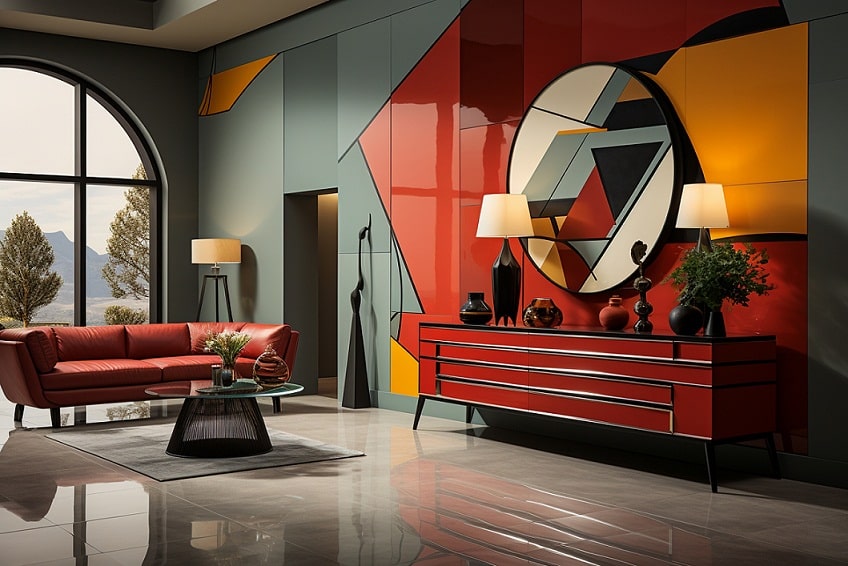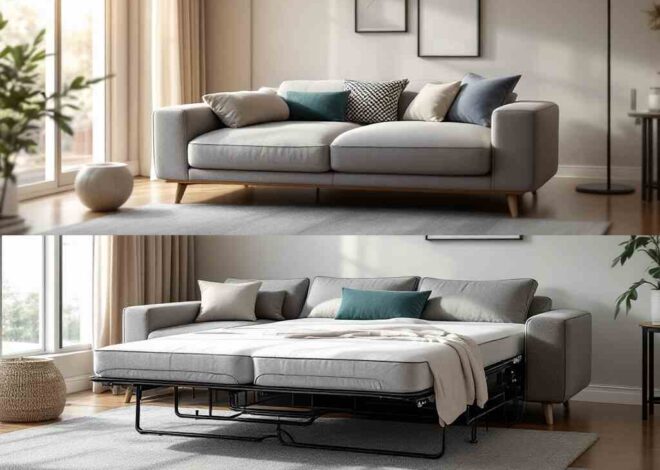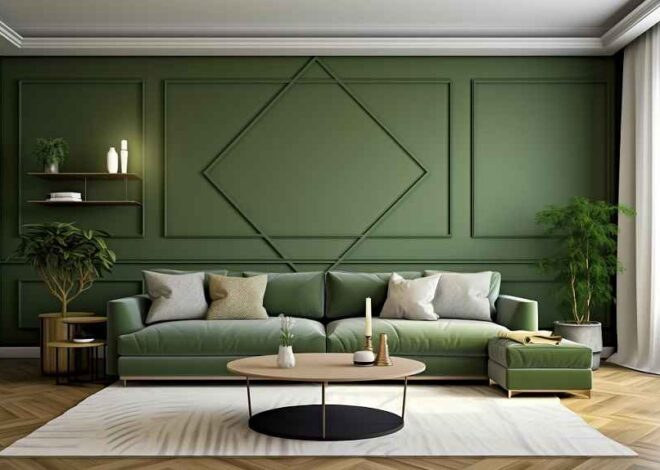
What is the Best Color for a Living Room?
A living room, often referred to as the heart of a home, is a place where we spend a significant amount of time. The choice of its color can make a considerable impact on the overall atmosphere and mood of the space. But what is the best color for a living room?
Importance of Choosing the Right Living Room Colors
Choosing the right color for your living room is not just about aesthetics; it’s about creating an environment that reflects your style, enhances your mood, and complements your lifestyle.
Impact of Color on Mood and Atmosphere
Colors have a profound effect on our mood and behavior. They can make a room feel calm, energetic, or even gloomy. The right color choice can create a welcoming and comfortable environment.
Popular Living Room Colors
When it comes to living room colors, there are a plethora of options. Here are some of the most popular choices:
Neutral Tones
Neutral tones are versatile and timeless. They provide a great backdrop for almost any type of décor and style.
White and off-white
White and off-white create a sense of space and light. They offer a clean, fresh look and feel, making your living room appear larger and brighter.
Beige and cream
Beige and cream are warm neutrals that add a sense of coziness and comfort to your living room. They work well with a variety of color schemes and décor styles.
Gray and greige
Gray and greige (a blend of gray and beige) are sophisticated neutrals that can add depth and elegance to your living room.
Warm Colors
Warm colors can make a room feel inviting and cozy. They are ideal for large living rooms where you want to feel more intimate.
Soft yellows
Soft yellows can make your living room feel sunny and cheerful. They pair well with a variety of other colors and styles.
Warm oranges
Warm oranges can add a touch of energy and enthusiasm to your living room. They work well with brown and cream tones.
Cozy reds
Cozy reds can make your living room feel warm and inviting. They pair well with neutrals and can work as an accent color.
Cool Colors
Cool colors can make a room feel calm and relaxed. They are perfect for small living rooms that you want to feel more spacious.
Calming blues
Calming blues can make your living room feel serene. They pair well with a variety of other colors and styles.
Refreshing greens
Refreshing greens can make your living room feel rejuvenating and refreshing. They work well with a variety of other colors and styles.
Soothing purples
Soothing purples can add a touch of luxury and sophistication to your living room. They pair well with neutrals and can work as an accent color.
Factors to Consider When Choosing Living Room Colors
When choosing living room colors, there are several factors to consider:
- Room size and layout: Light colors can make a small room feel larger, while dark colors can make a large room feel more intimate.
- Natural light exposure: Rooms with lots of natural light can handle darker colors, while rooms with little natural light may benefit from lighter colors.
- Existing furniture and decor: Your living room color should complement your existing furniture and decor.
- Personal style and preferences: Ultimately, your living room should reflect your personal style and preferences.
Color Psychology in Living Rooms
Color psychology refers to the study of how colors affect our emotions and behaviors. In the context of living rooms, understanding color psychology can help you choose colors that create the desired atmosphere.
How Colors Affect Mood and Behavior
Different colors evoke different moods and behaviours. For example, blue is often associated with calmness and relaxation, while red is associated with energy and excitement.
Choosing Colors Based on Desired Atmosphere
If you want your living room to feel calming and relaxing, you might choose blues or greens. If you want it to feel cheerful and energetic, you might choose yellows or oranges.
Trending Living Room Color Schemes
When it comes to living room color schemes, there are several trending options:
Monochromatic
A monochromatic color scheme uses different shades of the same color. This creates a harmonious and cohesive look.
Complementary
A complementary color scheme uses colors that are opposite each other on the color wheel. This creates a vibrant and high-contrast look.
Analogous
An analogous color scheme uses colors that are next to each other on the color wheel. This creates a harmonious and balanced look.
Triadic
A triadic color scheme uses colors that are evenly spaced around the color wheel. This creates a vibrant and balanced look.
Best Living Room Colors for Different Styles
Different styles call for different color palettes. Here are some of the best living room colors for different styles:
Modern and minimalist
Modern and minimalist styles often use a neutral color palette with pops of bold color.
Traditional and classic
Traditional and classic styles often use a warm color palette with rich and deep tones.
Bohemian and eclectic
Bohemian and eclectic styles often use a vibrant and colorful palette with a mix of patterns and textures.
Scandinavian and hygge
Scandinavian and hygge styles often use a neutral and light color palette with cozy textures and natural elements.
Living Room Color Combinations
When it comes to living room color combinations, there are several popular options:
Two-tone color schemes
A two-tone color scheme uses two different colors. This can create a balanced and harmonious look.
Accent walls
An accent wall uses a bold color or pattern on one wall to create a focal point in the room.
Color blocking techniques
Color blocking uses two or more different colors in large blocks or sections. This can create a vibrant and high-contrast look.
How to Test Living Room Colors
Before committing to a color, it’s a good idea to test it in your living room. Here are some ways to do so:
Paint swatches and samples
Paint swatches and samples allow you to see how a color will look on your walls in different lighting conditions.
Virtual room painters
Virtual room painters allow you to see how a color will look in your room digitally. Many paint manufacturers offer these tools on their websites.
Mood boards
A mood board is a collage of images that represent the look and feel you want to achieve. You can include paint colors, furniture, decor, and more.
Tips for Incorporating Color in Living Rooms
Here are some tips for incorporating color in your living room:
- Using colorful accessories: Accessories like throw pillows, rugs, and artwork can add a pop of color without a big commitment.
- Balancing bold and neutral tones: Bold colors make a statement, but too many can be overwhelming. Balance them with neutral tones.
- Creating focal points with color: Use color to draw attention to a particular area or piece of furniture in your living room.
Common Mistakes to Avoid with Living Room Colors
When choosing living room colors, avoid these common mistakes:
- Choosing colors that clash with existing elements: Your living room color should complement your existing furniture and decor, not clash with them.
- Overlooking lighting conditions: Consider how much natural light your living room gets and how that will affect the color.
- Ignoring color undertones: Even neutral colors have undertones. Make sure the undertones in your living room color match those in your existing elements.
Expert Advice on Living Room Colors
Here are some tips from experts on choosing living room colors:
Interior designer recommendations
Interior designers often recommend starting with a neutral base and adding color with accessories and accent pieces.
Color consultant tips
Color consultants often recommend considering the mood you want to create and how the color will look in different lighting conditions.
Paint manufacturer insights
Paint manufacturers often have color tools and resources on their websites to help you choose the right color.
DIY Living Room Color Projects
If you’re feeling crafty, here are some DIY living room color projects you might try:
Painting techniques for walls
Try different painting techniques, like sponging or color washing, to create a unique look.
Upcycling furniture with color
Give old furniture a new lease of life by painting it a bold color.
Creating custom artwork
Create your own artwork using colors that complement your living room.
Maintaining and Updating Living Room Colors
Here are some tips for maintaining and updating your living room colors:
Cleaning and touch-ups
Keep your walls looking fresh by cleaning them regularly and touching up any scuffs or marks.
Seasonal color changes
Consider changing your accessories or accent colors with the seasons for a fresh look.
Long-term color refreshes
If you’re ready for a big change, consider repainting your walls or updating your furniture.
Conclusion
Choosing the right color for your living room can make a significant impact on the overall atmosphere and mood of the space. It’s not just about aesthetics; it’s about creating an environment that reflects your style, enhances your mood, and complements your lifestyle. So don’t be afraid to experiment with different colors and see what works best for you. Happy painting!


